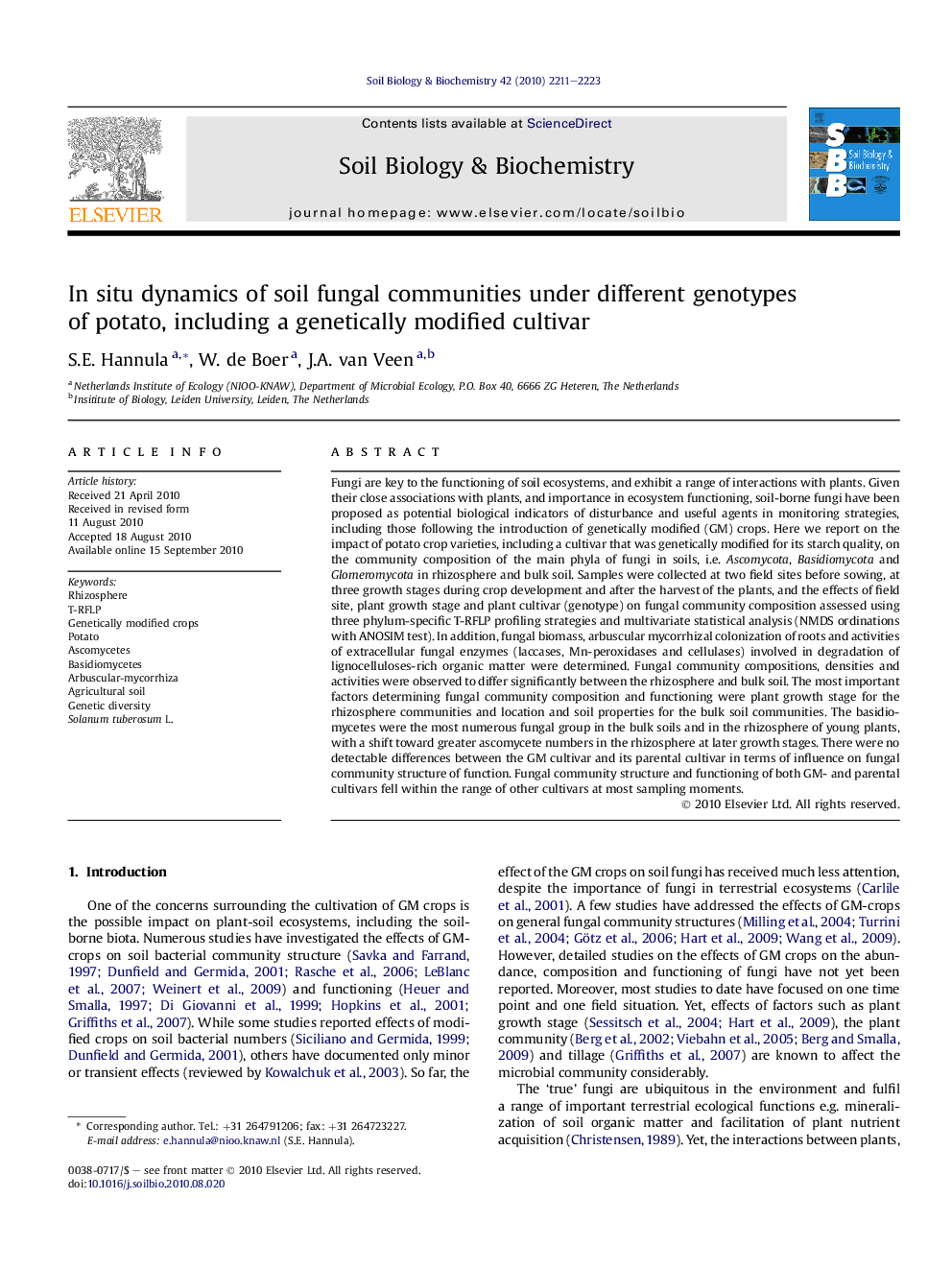| Article ID | Journal | Published Year | Pages | File Type |
|---|---|---|---|---|
| 2025375 | Soil Biology and Biochemistry | 2010 | 13 Pages |
Fungi are key to the functioning of soil ecosystems, and exhibit a range of interactions with plants. Given their close associations with plants, and importance in ecosystem functioning, soil-borne fungi have been proposed as potential biological indicators of disturbance and useful agents in monitoring strategies, including those following the introduction of genetically modified (GM) crops. Here we report on the impact of potato crop varieties, including a cultivar that was genetically modified for its starch quality, on the community composition of the main phyla of fungi in soils, i.e. Ascomycota, Basidiomycota and Glomeromycota in rhizosphere and bulk soil. Samples were collected at two field sites before sowing, at three growth stages during crop development and after the harvest of the plants, and the effects of field site, plant growth stage and plant cultivar (genotype) on fungal community composition assessed using three phylum-specific T-RFLP profiling strategies and multivariate statistical analysis (NMDS ordinations with ANOSIM test). In addition, fungal biomass, arbuscular mycorrhizal colonization of roots and activities of extracellular fungal enzymes (laccases, Mn-peroxidases and cellulases) involved in degradation of lignocelluloses-rich organic matter were determined. Fungal community compositions, densities and activities were observed to differ significantly between the rhizosphere and bulk soil. The most important factors determining fungal community composition and functioning were plant growth stage for the rhizosphere communities and location and soil properties for the bulk soil communities. The basidiomycetes were the most numerous fungal group in the bulk soils and in the rhizosphere of young plants, with a shift toward greater ascomycete numbers in the rhizosphere at later growth stages. There were no detectable differences between the GM cultivar and its parental cultivar in terms of influence on fungal community structure of function. Fungal community structure and functioning of both GM- and parental cultivars fell within the range of other cultivars at most sampling moments.
